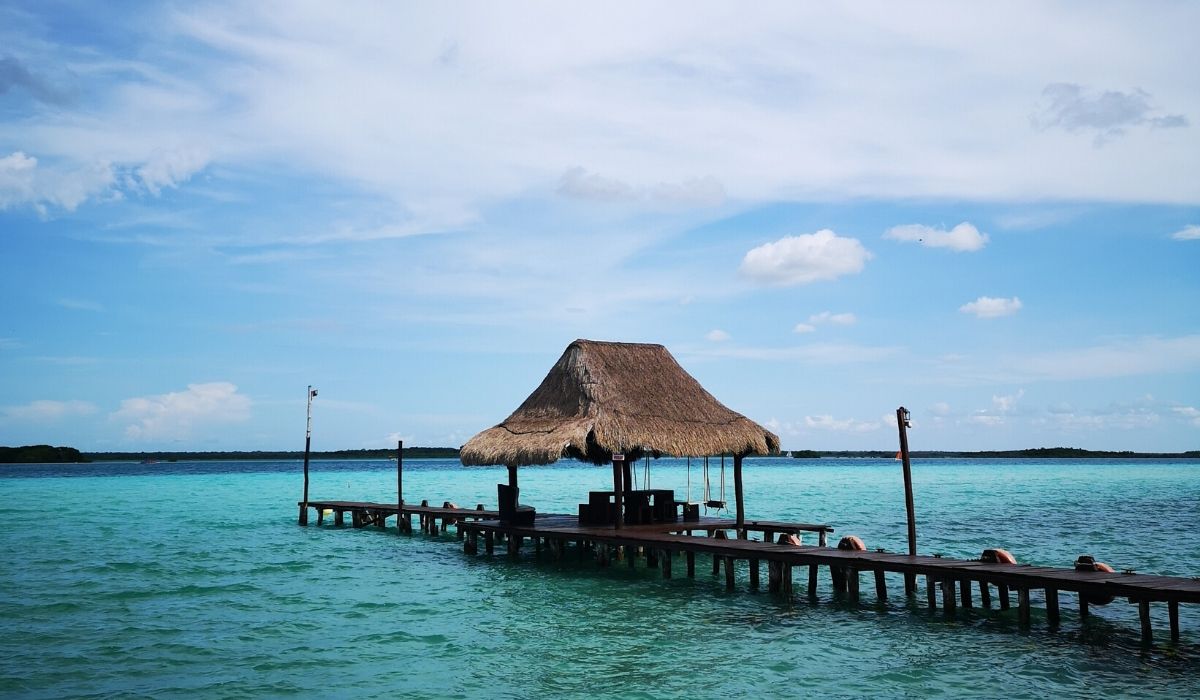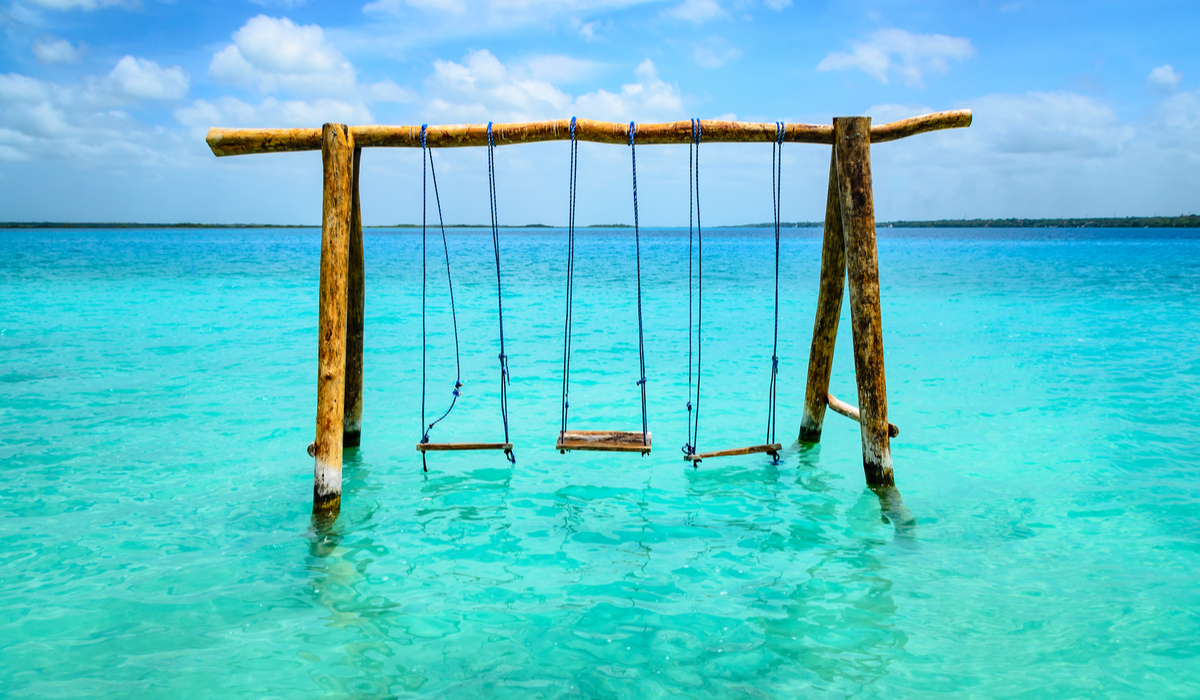Bacalar - Lagoon of Seven Colors
Lagoon of Seven Colors
Beyond the Riviera Maya lies a beautiful, little-known stretch of Caribbean coastline known as the ‘Costa Maya,’ where deserted beaches and seldom visited ancient ruins await. Inland, Laguna Bacalar known as “the lake of seven colors” because of all the amazing shades of blue is a world apart from the excitement of Cancun or Playa del Carmen. You will discover the area exudes a deep history, natural beauty and serenity like no other.
This inland lagoon is the focal point of your Bacalar vacation and dictates the history, culture and activities in the area. The road trip to Bacalar is a historical adventure in and of itself, with the landscape changing as you head out of the Riviera Maya and into the Costa Maya. The farther south you drive from Tulum, it becomes apparent that “we’re not in Kansas anymore, Toto.” You will see Mayan women in traditional dress selling cooked meats and baked goods near highway speed bumps. Furniture makers set up shop along this highway that takes you into the Costa Maya. Welcome to southern Quintana Roo; an authentic taste of Mayan Mexico.

Stop Off in Felipe Carrillo Puerto En Route to Bacalar
90 kilometers south of Tulum, about an hour’s drive, is Felipe Carrillo Puerto, a thriving city with a non-touristy feel. Shops line the streets, authenitc mexican food is found in local restaurants and you will see a very different part of Mexico. The Chetumal-Escarcega highway is approximately 150 kilometers farther south and Quintana Roo’s gateway to Central America. Continuing down Highway 307, on the other side of the village of Limones is the turn off to Mahahual and Xcalak, two evolving sea side towns that specialize in off-the-beaten-path vacations. Lots of fishing, snorkeling and diving is happening in lesser known, spectacular locations. But you are heading to Bacalar so go south, my friend, go south.
Laguna Bacalar
Farther down Highway 307 away from the coast, is Laguna Bacalar, also called the ‘Lake of the Seven Colors’ by the ancient Maya. From the air, Laguna Bacalar looks like a turquoise ribbon winding through the jungle. There is a fishing tournament every August, with windsurfing, canoeing, rowing, sailing and bird watching celebrated during this festival. The lagoon is the focal point of any Bacalar vacation and holds a wealth of history and influence in this southern point of Quintana Roo.

San Felipe Bacalar – the town center
The pueblo of Bacalar is next to the lagoon and sees few tourists. In 1545 Gaspar Pacheco founded the town as Salamanca de Bacalar, derived from the Mayan words ‘Bak Halal’, meaning ‘place surrounded by reeds.’ The Fortress de San Felipe Bacalar was built in 1729 by the Spanish to protect the pueblo from pirates. During the Caste War, the Fort was used by the Spanish as a point of defense against Maya who fought to win back the village, won the war but left the fort in ruins. The fort has since been restored and a museum added so visitors can understand and share in the turbulent history of the area.
Seldom Seen Maya Ruins Close to Bacalar
The Mayan archaeological zones of Chacchoben, Dzibanche, Kohunlich, Becan and Chicanna are quite impressive and worth a visit if you venture to Bacalar or the Costa Maya. With various types of accommodations on Laguna Bacalar, you will find other travelers on the same journey, and happy to share in their stories and adventures.
Bacalar Is A Hub For Sustainable Tourism
With a variety of eco-systems and historical sites are interconnected in the Bacalar area; the lagoon, the jungle and the Mayan ruins. Bacalar is the perfect destination for the sustainable tourist who wants to dive into local culture, economies, people and natural environments. Far removed from the shores of the Riviera Maya, local communities maintain their unique cultural traditions and lifestyles that define the Costa Maya. If you are itching for more information about the Mayan culture, visit the Museo de la Cultura Maya (the Mayan Cultural Museum) in the capital city of Chetumal on the Mexico/Belize border.
